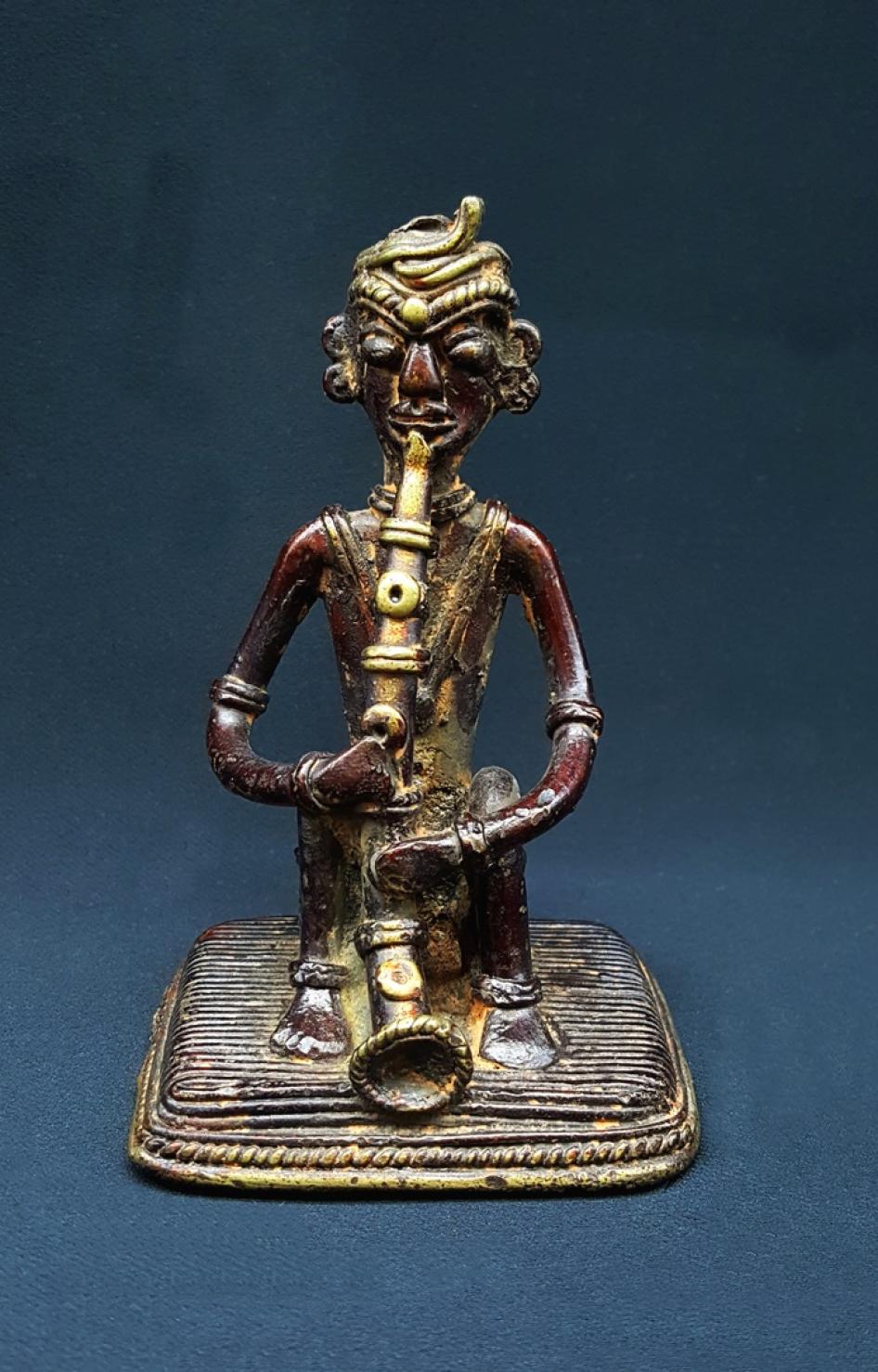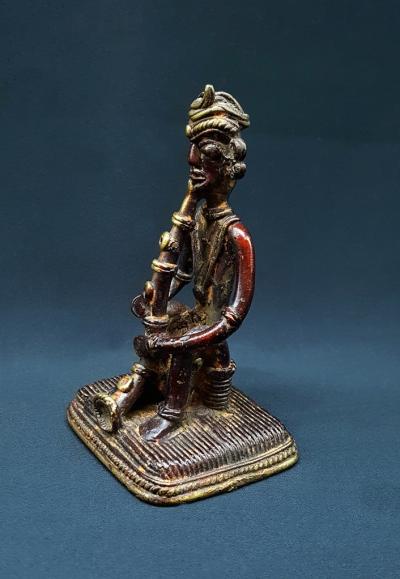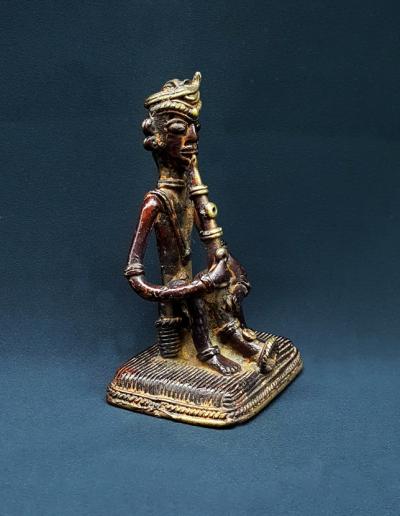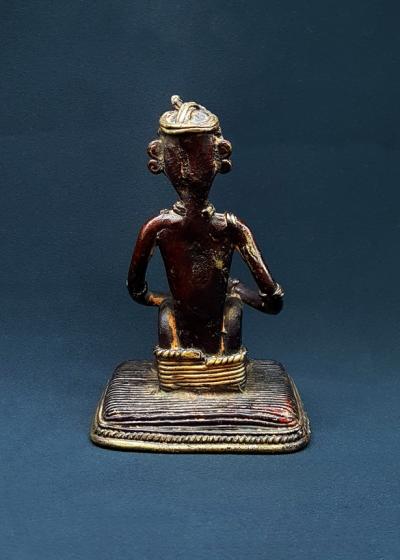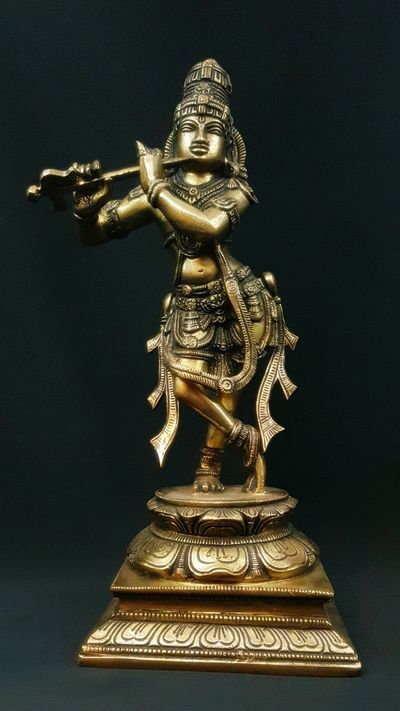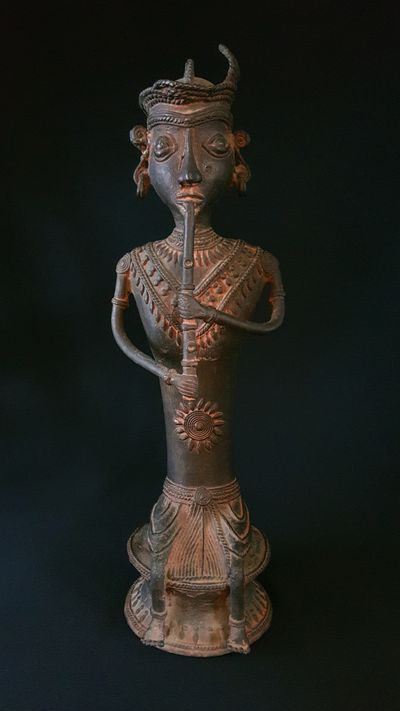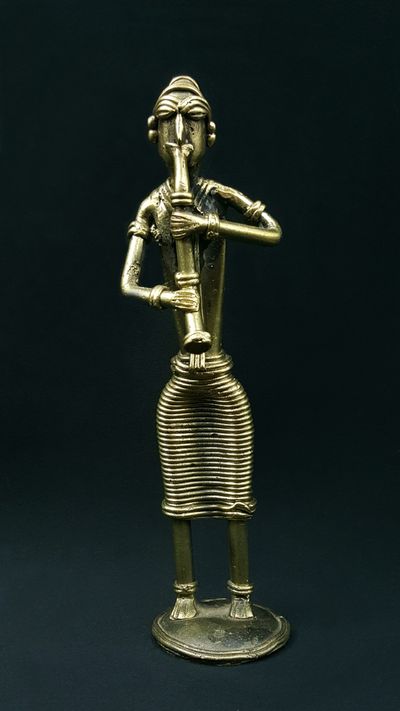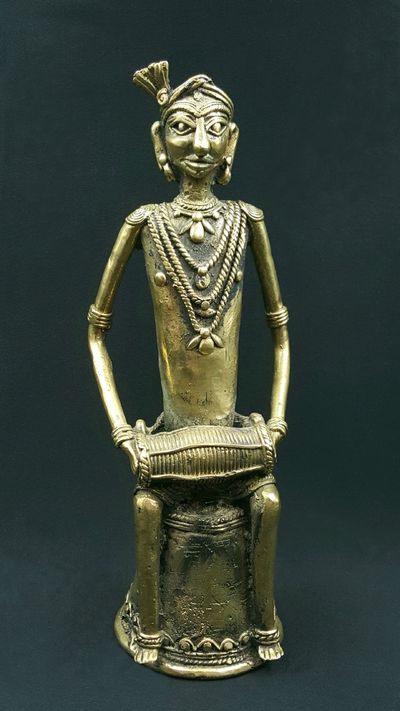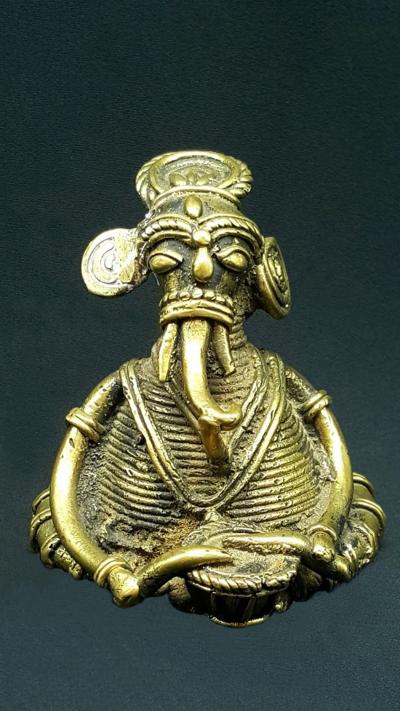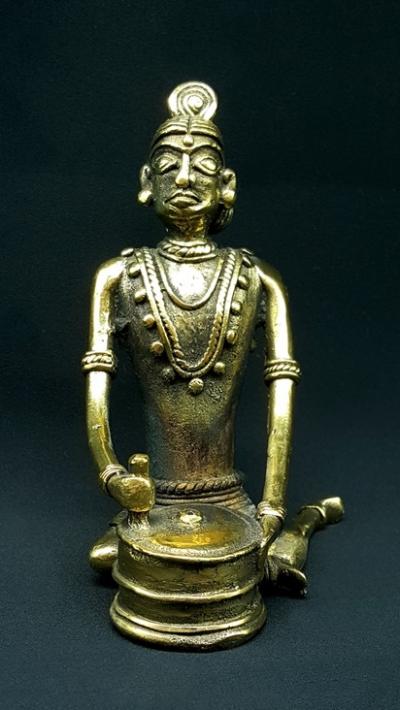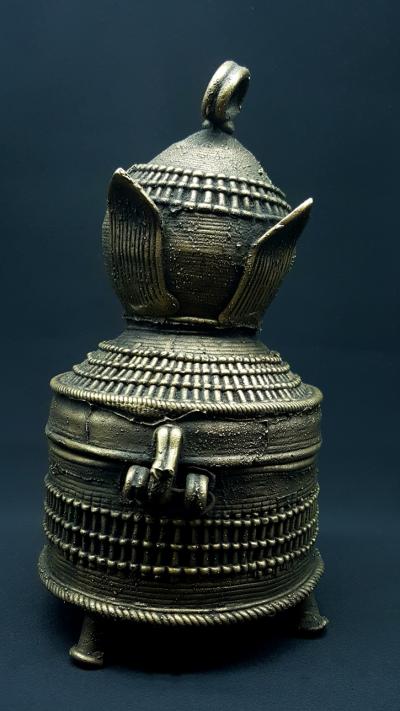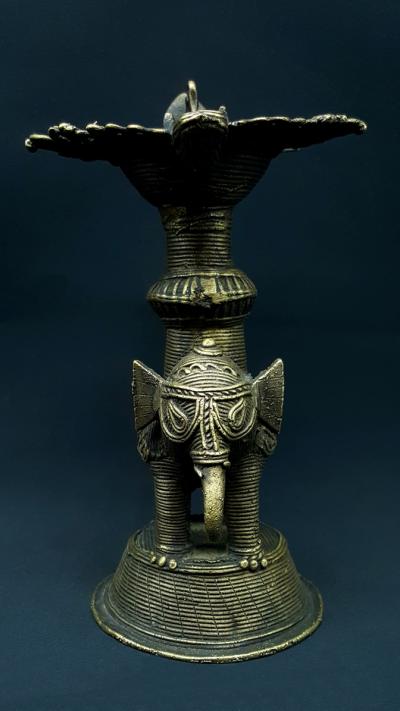Statue Le musicien à la flute traversière Dholak
Musique chez les Bastars
€99.00
Cette statue évoque la musique qui tient notamment une grande place dans les cérémonies tribales tout comme dans les rituels hindous. En savoir plus...
Hauteur : 10,5 cm
Poids : 0,350 Kg
Art sacré
Cire perdue
Origine : Chattisgarh - Inde
Livraison gratuite UE, Norvège et Suisse
Description
L'art tribal
Les tribus, pratiquant l'art Dokra, sont originaires de la région de Bastar, dans l'Inde du Sud (aujourd'hui situé dans l'État de Chattisgarh), elles ont émigré plusieurs siècles auparavant et se sont installées un peu partout en Inde du Nord au Sud.
La plupart ont gardé leur tradition (art culinaire, vestimentaire, fêtes-) et leur religion animiste.
L'art Dokra
Cet art traditionnel et artisanal n'a pas changé depuis des millénaires (+ de 4000 ans) et la technique utilisée est toujours celle de la cire perdue : un modèle grossier en argile est réalisé puis recouvert de cire par l'artiste qui va lui donner sa forme définitive avec ses détails. L'ensemble est à nouveau recouvert d'un mélange argileux puis chauffé dans un foyer ouvert où un alliage cuivreux sera coulé. voir Blog
Les objets produits par les artistes Dokra peuvent être de nature usuels : coupelle, bougeoir... des instruments de musiques (cuivres), ou bien artistiques tels que des bijoux, des animaux : chevaux, éléphants, tortues..., des statues d'hommes et femmes représentant des scènes de vies quotidiennes et des divinités hindous adoptées par les tribus : Ganesh, Lakshmi,...
Posture Assis, bien droit, en tailleur genoux relevés, dans une position atypique pour l’Inde où habituellememt les genoux touchent le sol. La flûte est posée au sol entre les pieds. La posture est confortable et permet au musicien de jouer pendant des heures quelque soit l’endroit où il se trouve.
Un simple pagne habille ce musicien tout en simplicité.
Bijoux Ce musicien est paré d’un simple collier ornant sa poitrine. Plusieurs bracelets embellissent ses bras.
Visage Un simple foulard coiffe sa tête rehaussé par un bandeau frontal orné d’une pierre.
Cette statuette toute en simplicité nous offre une vision directe de l’art tribal Dokra : une représentation des moments essentiels de la vie et la musique, lors des cérémonies religieuses en fait grandement partie. Pas de détails superflus, l’essentiel est exprimé en quelques traits pour donner une impression forte.
